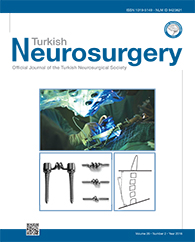MATERIAL and METHODS: Based on the basis of radiological findings and clinical features, 59 aneurysms coexisting with AVMs were classified into four different types: intranidal, flow-related (proximal and distal), and unrelated. These aneurysms were treated by endovascular techniques with or without AVM embolization. Clinical outcome was assessed using the modified Rankin Scale (mRS).
RESULTS: 59 aneurysms coexisting with AVMs were found in 39 patients. There were 11 unrelated aneurysms, 18 proximal flowrelated aneurysms, 11 distal flow-related aneurysms and 19 intranidal aneurysms. In the 11 unrelated aneurysms, 4 were caused subarachnoid hemorrhage. In 11 distal flow-related aneurysms near the AVM, 7 caused a major hemorrhage. Six of the 19 intranidal aneurysms presented with hemorrhage. In contrast, only 3 of the 14 proximal flow-related aneurysms on major feeding arteries caused hemorrhage.
CONCLUSION: Aneurysms coexisting with AVMs could be classified into four types and this classification may provide a rationale for endovascular treatment.
Keywords : Aneurysm, Arteriovenous malformation, Endovascular treatment




